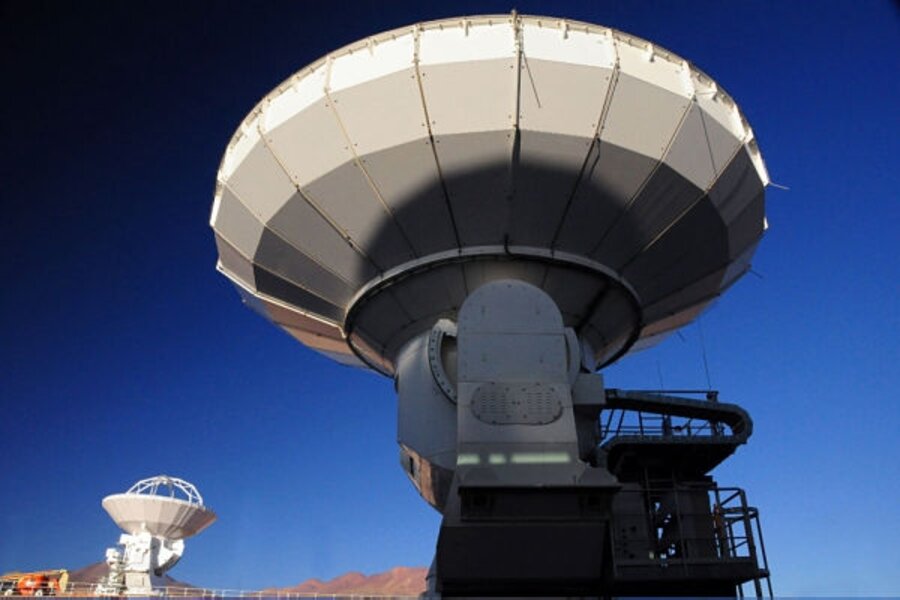Fledgling radio observatory gets first out-of-this-world glimpse
Loading...
A quick sal-yoooot to the folks building an enormous radio-telescope array in Chile.
For the first time, they've linked a pair of antennas together to act as one, hooked them up to the electronics in the control center, and taken their first peek at something in space -- Mars, an easy initial target. No image, mind you. Just "first fringes," as opposed to the "first light" an optical observatory would register.
But the bottom line: It works, the project's architects announced Wednesday. Eventually, the international project -- the Atacama Large Millimeter/Submillimeter Array (ALMA) -- will plant 66 antennas on a plateau some 16,500 feet above sea level in Chile's Atacama Desert. The antennas are designed to shuttle back and forth to form either a tight bunch or an array roughly 10 miles across.
The dishes form an interferometer, a system that combines signals from two or more antennas to produce data far richer in detail than any one antenna alone could provide.
Where a single antenna might see something that looks like a relatively broad blur, an interferometer can look at the same object and see one large, and other smaller objects that are actually there. The bigger the virtual antenna, the more closely spaced distant objects can be and still be detected as individual objects. The array also will be vastly more sensitive to very faint radiation coming from large, blob-like molecular clouds -- so-called extended sources for millimeter and submillimeter radiation.
The observatory will focus its effort on the coolest stuff in the universe, literally -- clouds of dust and gas that provide the raw materials for stars and planets. It also will turn its antennas on galaxies in the early universe, some 10 billion light-years away.
So far, 14 antennas have been delivered to the observatory's operations center, which sits below the plateau at 9,500 feet above sea level. Nine come from the North American partners, four from East Asian partners, and one from the European Southern Observatory. One Japanese and one US antenna took part in the first-fringes test. A spokesman for the US National Radio Astronomy Observatories says the first antennas should head up to the plateau later this year.
Oh, and for your Trivial Pursuits pleasure: A support building under construction on the plateau will be the second highest (altitude) steel-framed building in the world. The first? China's Tanggula railway station, perched at 16,627 feet above sea level along Qingzang Railway, which runs from China into Tibet.





